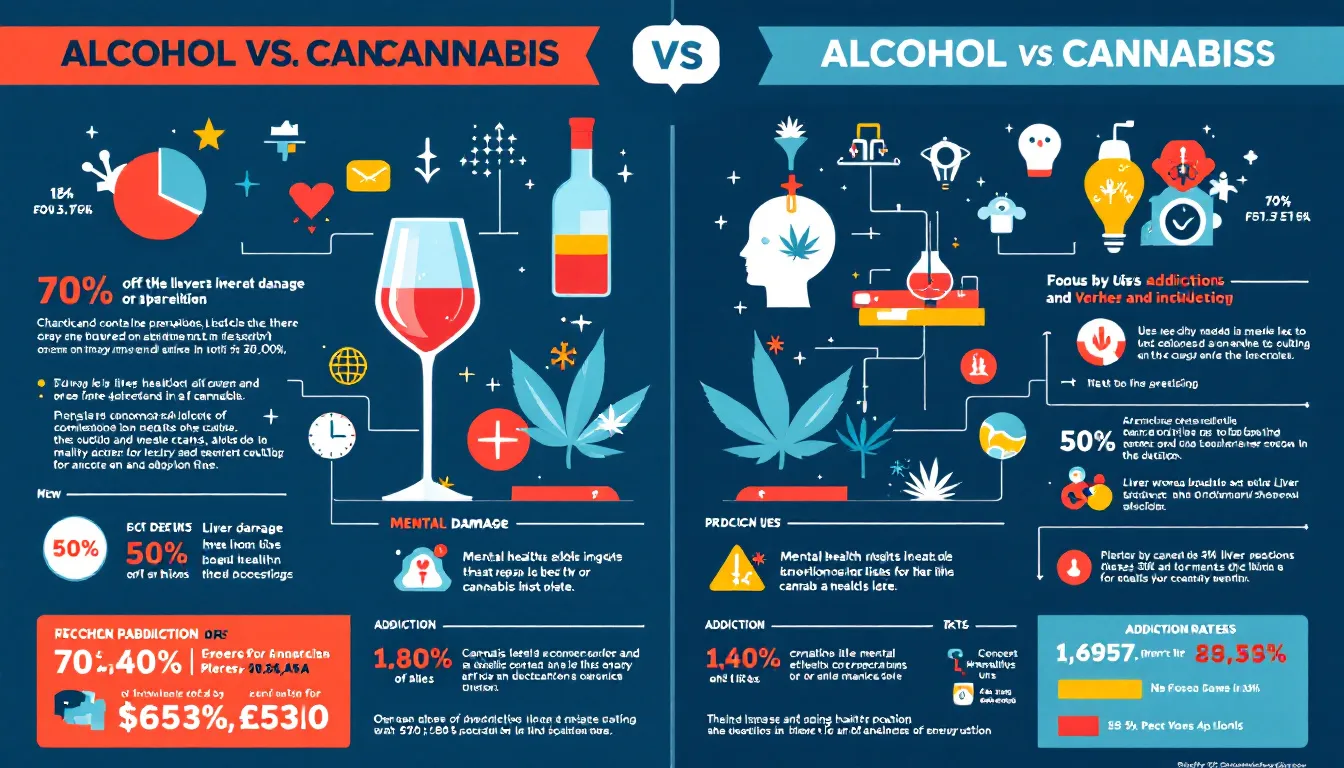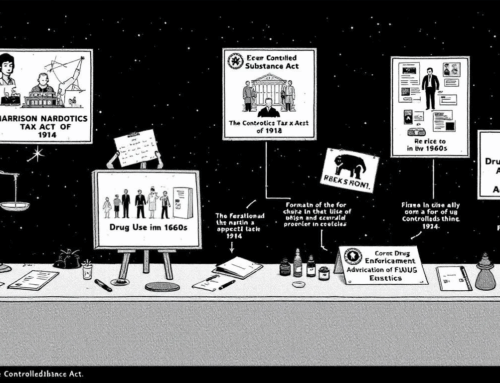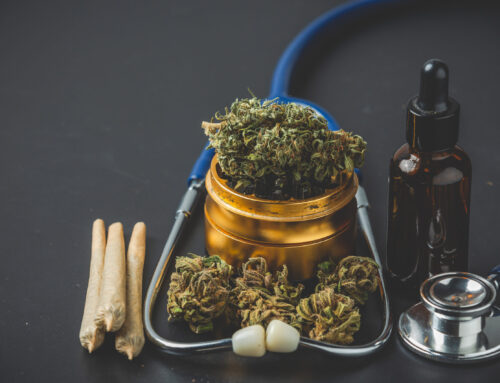Cannabis use in America on the rise while alcohol is on the decline marks a major shift in how Americans choose their recreational substances. Driven by changes in law, health awareness, and evolving social norms, this trend highlights broader cultural changes. Let’s explore the reasons behind Cannabis replacing alcohol in America and its implications for our society and health.
Cannabis replacing alcohol in America- Key Takeaways
- Cannabis use in the U.S. has significantly increased, particularly among young adults, with over 50% of individuals aged 18-29 reporting usage, reflecting a cultural shift towards acceptance.
- Moderate alcohol consumption has declined by 15% in recent years, with younger demographics increasingly favoring cannabis as a healthier alternative for social relaxation.
- The legalization of cannabis is expected to continue reshaping consumption patterns, resulting in economic benefits while prompting public health discussions around its comparative risks to alcohol.
A Shift in Consumption Patterns

The United States is experiencing a profound change in substance use trends. Reports indicate:
- Cannabis use among Americans has been steadily rising over the past decade.
- This rise has led to a significant cultural shift. Commonly reported usage rates have increased in recent years.
- The trend is particularly evident among young adults.
- Over 50% of individuals aged 18-29 report cannabis use, reflecting a generational trend toward acceptance and usage, according to a national survey. Recent data from a national household survey highlights that this trend is accelerating, providing broad population insights into changing consumption patterns.
For the first time, recent studies show that daily cannabis use has surpassed daily alcohol use in some demographics.
Concurrently, moderate alcohol consumption has decreased by 15% in the past four years, especially among younger demographics.
Increasing Cannabis Use Among Young Adults
A substantial portion of young adults now report using cannabis and Cannabis replacing alcohol in America yound adult’s daily life, with key points including:
- Around 50% acknowledging its use in recent surveys, with this age group experiencing the most rapid increase.
- The rate of past 30-day cannabis use among young adults increased from 14.9% in 2005 to 28.7% in 2023, indicating a significant rise in consumption.
- Many young people are turning to cannabis as a regular part of their lifestyle, reporting daily marijuana use and attracting a growing number of daily users. This reflects a trend toward more intensive use among young adults. The actual use of cannabis has become more prevalent among this demographic, with many engaging in daily or near marijuana use. The per capita rate of cannabis use in this age group has also risen sharply over recent years.
- 57% of current users engage in multi-modal consumption, utilizing two or more methods of administration.
The legalization of marijuana has played a crucial role in this shift, making cannabis more accessible and socially acceptable. Changing societal norms and growing acceptance of cannabis are reshaping public perception, often seen as a safer alternative to alcohol.
Additionally, the rise in THC-infused drinks is creating a new drinking culture focused on wellness rather than intoxication.
Decline in Alcohol Consumption
The percentage of adults in the U.S. who drink alcohol has dropped to 54%, a record low recorded in nearly 90 years. Key points include:
- Alcohol consumption among young adults fell from 59% in 2023 to 50%, a decrease of one percentage point.
- There is a rising preference for no-alcohol and low-alcohol beverages. Sales of beer and wine have also declined as cannabis use has increased.
- This trend reflects a broader shift in how younger generations approach their health and social lives.
As moderate alcohol consumption declines, many are replacing alcohol with cannabis. Declines in high frequency drinking and typical alcohol use are now being contrasted with the rise in daily cannabis use. Individuals are prioritizing their wellness, seeking alternatives that align better with their health goals. This shift not only reflects changing personal choices but also a significant cultural transformation, with cannabis emerging as the preferred substance for relaxation and social interaction.
Factors Driving the Trend

Several factors are driving the increasing use of cannabis over alcohol. The correlation between legalization and cannabis use suggests that changing cultural attitudes might underpin both trends. While policy drove some of these changes, the causal arrows point in both directions, as shifts in culture and policy continue to influence each other. More Americans now consume cannabis on a near-daily basis than alcohol, with daily cannabis consumption increasing nearly 15 times since 1992.
These shifts in consumption patterns are reshaping public health discussions and societal norms, leading to enormous changes. These changes have occurred over recent decades and represent a fundamentally different scale of cannabis use compared to the past.
Policy Liberalization
The legalization of cannabis has led to significant economic shifts, including the emergence of a thriving industry that generates substantial tax revenue. This policy liberalization has significantly reduced illicit market activity, allowing for better product regulation and taxation. Experts note that the declining trend in alcohol consumption may be linked to increasing acceptance and legalization of cannabis across various states.
Future regulatory changes are expected to lead to more comprehensive legalization of recreational cannabis, significantly impacting consumption rates and market dynamics. As cannabis becomes more accessible and socially accepted, the trend towards its use over alcohol is likely to continue.
Health Concerns
A growing majority of Americans, now at 53%, believe that moderate drinking poses health risks. This perception is influencing public attitudes towards both alcohol and cannabis, with many viewing cannabis as a safer alternative. Cannabis is often perceived as less harmful than cigarettes or tobacco, despite ongoing debates about the risks of inhaling smoke. Surveys show that alcohol is perceived as significantly more addictive than cannabis, further driving the trend towards cannabis use. The health risks of tobacco use and other drugs are also frequently compared to those of cannabis and alcohol, shaping public perceptions and policy discussions.
Experts suggest that the trend of substituting alcohol with cannabis reflects a growing awareness of the health risks associated with alcohol consumption. As more individuals prioritize their health, the shift from alcohol to cannabis is seen as a move towards a healthier lifestyle.
Cultural Shifts
Cultural shifts are also playing a significant role in the increasing acceptance of cannabis and its underlying culture. Self-reported cannabis use among young adults has notably increased, with recent surveys indicating a rise in usage rates and a shift in attitudes towards its acceptance. Experts predict that cannabis consumption will continue to rise due to changing social attitudes and legalization efforts across various states.
The legalization of cannabis may help in reducing the over-policing of marginalized communities, addressing longstanding social injustices. A significant number of individuals are opting for cannabis over alcohol, noting that cannabis can provide a similar social experience without the negative aftereffects of alcohol.
Health Implications

The health implications of rising cannabis use compared to alcohol are multifaceted. Heavy alcohol consumption is linked to higher rates of liver disease and cancer compared to cannabis, which has fewer severe health risks associated with its use.
Frequent alcohol consumption is also linked to higher risks of cardiovascular issues and various cancers, while cannabis shows different health impacts.
Comparative Health Risks
While the risks of cannabis use are still being studied, the established harms of alcohol consumption are widely recognized. Research indicates that the health risks associated with alcohol, such as liver disease and addiction, far exceed those linked to cannabis use. Long-term alcohol consumption can lead to serious health issues, including cardiovascular problems, while the long-term effects of cannabis remain less clear and less studied.
Daily cannabis users may experience increased risks of heart-related conditions such as stroke and heart attack, a concern not as prevalent among moderate drinkers. Chronic cannabis use can lead to respiratory issues and cognitive impairments, but studies suggest that the long-term health risks of moderate drinking may be more pronounced.
Addiction and Abuse
Cannabis has a lower potential for addiction compared to alcohol, with studies indicating that only about 9% of users develop dependence, while this rate is higher for alcohol. Many personal accounts detail how switching to cannabis helped alleviate addiction and provided a healthier coping mechanism compared to alcohol. However, concerns about drug abuse remain, especially with more intensive or frequent use.
Healthcare experts suggest that substituting cannabis for alcohol may help reduce withdrawal symptoms and cravings in individuals recovering from alcohol dependence. Some researchers advocate for the use of cannabis as a therapeutic alternative for those struggling with alcohol dependence, highlighting its potential benefits. Additionally, cannabis is increasingly being considered as a form of medicine for certain conditions.
Long-term Effects
Daily cannabis use has been associated with an increased risk of chronic bronchitis. Patients who use marijuana daily may experience cognitive impairment and mental health issues, such as anxiety and depression. While moderate drinking is linked to certain social health benefits, high-frequency cannabis use does not show the same benefits. Additionally, marijuana use does not provide the same advantages as moderate drinking.
High-frequency cannabis use carries risks that can broadly affect life satisfaction and social relationships compared to moderate alcohol consumption. It is crucial to consider these long-term effects when evaluating the overall health implications of the shift from alcohol to cannabis.
Economic and Social Impact

The economic and social impacts of cannabis legalization are significant. A growing number of individuals are opting for cannabis over alcohol for social relaxation, with many reporting positive lifestyle changes.
The market for THC beverages is projected to rapidly expand, with sales expected to reach between $9.9 billion and $14.9 billion in the next decade.
Economic Benefits of Cannabis Legalization
As of May 2021, over 70% of U.S. states had legalized medical cannabis, with 18 states allowing recreational use, showcasing a substantial shift in cannabis policy. In 2023, states that legalized cannabis for personal use collected over $4.2 billion in tax revenue.
States where recreational marijuana is legalized often see a substantial increase in tax revenue, which can be directed towards public services and health programs. The legal cannabis industry also creates numerous jobs, with an estimated 93,000 jobs attributed to around 15,000 dispensaries across the U.S.
Social Consequences
The shift towards cannabis legalization may alter crime rates, although the specific impacts can vary by region and context. While legal cannabis may lower enforcement costs, there are ongoing concerns about potential increases in underage use and impaired driving.
It is essential to consider these social consequences when evaluating the broader impacts of the shift from alcohol to cannabis. As society adapts to these changes, it will be important to implement measures that mitigate potential negative outcomes.
Case Studies and Personal Stories
Many individuals report that they have successfully replaced alcohol with cannabis, leading to improved mental health and decreased dependence on alcohol. Personal narratives reveal that switching to cannabis has allowed individuals to engage in social settings without the negative consequences often associated with alcohol.
Personal Transformation Stories
Individuals are increasingly sharing their journeys of sobriety from alcohol, often mentioning cannabis as a preferred alternative. One individual recounted that after quitting alcohol, they turned to cannabis gummies, which they found easier to integrate into social settings.
These stories highlight the transformative potential of replacing alcohol with cannabis, with many reporting significant improvements in their mental health and overall well-being.
Expert Opinions
Experts indicate that increased cannabis use may reduce alcohol-related health issues, as cannabis is often seen as a safer alternative. A new study conducted by a study’s author from Carnegie Mellon University supports these findings, providing further evidence of the shifting trends in substance use. Medical professionals warn of potential health risks associated with high-frequency cannabis use, though concerns differ significantly from those of alcohol.
Research shows that while alcohol can lead to severe health risks, cannabis has a different profile, with experts evaluating its risks in comparison. The most recent data from this research highlights the ongoing shift in substance use patterns. Health professionals note that the normalization of cannabis is correlating with a decrease in alcohol consumption, reflecting changing social norms.
Future Projections

Cannabis consumption is projected to continue increasing among various demographics, while alcohol use is expected to decline further. The trend suggests a generational shift, particularly among younger consumers who prefer cannabis over alcohol.
Trends Over the Next Decade
A noticeable shift towards cannabis over alcohol is expected, especially among younger demographics seeking alternative recreational substances.
The implications of these trends could reshape the landscape of substance consumption in America over the next decade.
Potential Policy Changes
Policy liberalization, including the legalization and decriminalization of cannabis, has resulted in an increase in cannabis use, particularly among young adults. Alcohol consumption has been declining as states have adopted more progressive cannabis laws.
Future estimates suggest that as cannabis regulations continue to relax, we could see a further decrease in alcohol use and increased reliance on cannabis. Historical data shows that periods of greater restriction on cannabis have been associated with declines in cannabis use. Depending on future policy decisions, the per capita rate of daily or near-daily cannabis use may either rise with continued liberalization or decrease if greater restriction is implemented. The ongoing changes in consumption patterns prompt policymakers to consider the need for updated regulations that reflect these shifts in public preference and health outlook.
FAQs
Why is cannabis use rising while alcohol consumption is declining in America?
Cannabis use is rising due to legalization, cultural acceptance, and health awareness. Younger Americans prefer cannabis as a safer recreational drug alternative, contributing to declining alcohol consumption. Factors like social norms, policy changes, and perceived health benefits drive this shift in substance use trends across the United States.
How does cannabis compare to alcohol in terms of health risks?
Cannabis is often seen as less harmful than alcohol, which is linked to liver disease, addiction, and cancer. Although cannabis has potential risks like respiratory issues and cognitive effects, its overall health risks are generally considered lower, making it a popular alternative for wellness-focused individuals seeking safer substance options.
What demographic is driving the rise in cannabis use?
Young adults aged 18-29 are the main drivers of increased cannabis use, with over 50% reporting recent consumption. This demographic favors cannabis over alcohol due to legalization, social acceptance, and perceptions of health benefits, reflecting a generational shift in recreational drug preferences in America.
What economic impacts does cannabis legalization have?
Cannabis legalization boosts state economies through tax revenue, job creation, and reducing illegal market activity. The growing legal cannabis industry supports dispensaries and businesses, contributing billions annually. This economic shift influences public policy, encourages regulation, and supports community health programs across states with recreational cannabis laws.
Can cannabis be a safer alternative to alcohol for social relaxation?
Many users view cannabis as a safer, healthier alternative to alcohol for socializing. Cannabis offers relaxation without the negative effects of alcohol intoxication, such as hangovers or addiction risks. This shift supports wellness trends and changes in social consumption, promoting cannabis as a preferred recreational substance.





